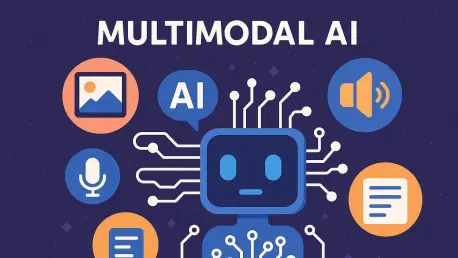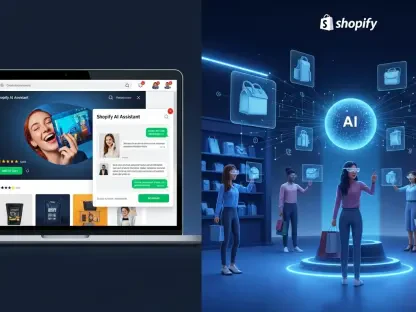When it comes to interpreting information from the world, it’s impossible to ignore the cues that are seen, heard, or even sensed. However, traditional artificial intelligence frameworks do exactly that by focusing solely on text. This necessitates a significant shift to encompass all aspects of data that reflect its diverse nature.
Introducing multimodal AI: A revolutionary approach to artificial intelligence that integrates reasoning into analysis through text, visual elements, audio, and sensor data. Incorporating more contextual information from these aspects enables AI to mirror human perception in the real world by focusing on multiple, interconnected channels at once.
As enterprises continue to experience fragmented, siloed inputs during AI applications, the ability to synthesize diverse data sources into coherent insight is no longer a luxury but an imperative for competitive success. In the business world, where context is currency, that’s exactly where the transformation begins.
The Importance of Multimodal AI in Business
As B2B leaders know, data is inherently fragmented—spanning scanned documents, spreadsheets, and audio notes. By digitally transforming how organizations operate, artificial intelligence (AI) has changed the data game across divergent industries. However, traditional AI heavily relies on text. By lacking the context to make sense of the diverse nature of data, companies risk decreasing confidence in decision-making. Fortunately, even advanced technology like AI is ever-evolving.
With multimodal AI, systems are able to interpret and process multiple forms of data simultaneously. From text and audio to video and images, this model can take in various inputs and output at the same time. With context as its primary driver, multimodal AI ensures that all responses feel human and are high-quality.
For example, Google Cloud’s Gemini offers state-of-the-art features that significantly enhance how enterprises build and scale with AI. With the Gemini 2.5 model, systems are able to apply reasoning before responding to prompts—elevating performance and accuracy. Through advanced thinking capabilities, native multimodality, and a large context window, this innovative tool carves a clearer path toward building next-generation experiences.
As the application possibilities multiply, the critical question remains: How will this play out across the B2B landscape?
Accelerating Anomaly Detection in Healthcare
In the healthcare sector, radiology has stood strongly at the forefront of AI innovation. However, many current systems have a restricted scope, confined to detecting anomalies in X-rays and inconsistencies in reports. The issue is that this limitation blocks out the broader clinical context, hindering effective healthcare practices.
To overcome such obstacles, healthcare professionals are turning to multimodal orchestration platforms and vision-language networks to merge with AI in radiology detectors. The goal is to transform every radiograph into an end-to-end, easily comprehensible decision-making machine. By doing so, organizations can better support clinicians, empower their patients, and unlock unparalleled outcomes.
This is exemplified through the collaboration between The Royal Marsden NHS Foundation Trust, NTT Data and CARPL.ai to build advanced AI-powered radiology analysis technology for medical imaging. This project aims to drive faster response times, more accurate diagnoses, and better-targeted treatment through AI algorithms designed to elevate the efficiency of cancer evaluations. With the volume of images needing review skyrocketing, leveraging multimodal AI is essential to prioritizing cases and avoiding fatigue-related inconsistencies.
Propelling Personalization in Retail
Across the retail industry, AI has traditionally focused on what consumers click on, buy, or search. While this behavioral data provides key insights into what customers are interested in, their engagement extends across sensory and contextual channels that are often missed by narrow strategies. To dive deeper into the consumer mindset, multimodal AI creates detailed customer profiles by understanding how emotions and visual cues inform and personalize experiences.
Since 2018, Amazon has strived to transform the shopping journey with its innovative Just Walk Out technology—enabling customers to enter a store, choose their items, and leave without waiting in queues to complete transactions. To take this automatic, end-to-end system to the next level, Amazon is now powering this tech through a multimodal foundational model to gather data from multiple inputs, from overhead video cameras to specialized shelf weight sensors.
AI visual systems have empowered retailers to easily identify damaged packaging, improper display setups, and out-of-place merchandising. The most significant aspect of this is that this technology has enabled a level of consistency once unattainable for human maintenance. By matching these capabilities with virtual reality tech, specialists can conduct immersive remote visual inspections and evaluate AI-targeted issues in context to uphold brand standards and customer experiences.
Providing Proactive Protection in Security
As AI continues to evolve to reshape how businesses interact with technology, multimodal approaches prove that embracing the fundamental shift is essential to powering more intelligent systems. In the cybersecurity realm, traditional measures often struggle to keep pace with the accelerating sophistication of system threats. However, multimodal AI addresses this challenge by integrating the analysis of text and visual elements to bolster anomaly detection and predict potential security breaches.
For instance, the City of London is doubling down on AI-powered surveillance systems to transform public safety. Through features like facial recognition, behavior prediction, and real-time alerts, incorporating AI empowers surveillance teams to identify individuals in crime databases and track them to conduct home arrests. Additionally, this technology elevates city management by keeping a closer eye on traffic monitoring and incident detection.
Barracuda Networks is also setting a new standard in proactive cybersecurity by embracing the power of multimodal AI. By taking this innovative approach, Barracuda is able to deliver more adaptive and context-aware safeguarding against emerging threats with next-gen accuracy and acceleration. From documents and URLs to images and QR codes, this technology simultaneously synthesizes and interprets diverse data streams to detect more than three times as many malicious activities—eight times faster than before.
Leveraging multimodal AI has also empowered this company to guarantee real-time threat intelligence that is continuously shared across their platform. By doing so, security teams can confidently ensure automated and adaptive security measures at every layer.
Conclusion
Multimodal AI doesn’t just process data from diverse sources—it deepens understanding in context by connecting disparate systems with meaningful insights. In this way, multimodal AI reflects the way humans perceive and act through the integration of sight, sound, and structure.
This significant shift in artificial intelligence applications is transforming how different industries approach technology to optimize their operations. From spotting subtle anomalies in medical imaging to flagging threats from surveillance systems, the future of observation belongs to the systems that mimic the way humans think intuitively.
Multimodal AI is carving a path forward for organizations aiming to unlock greater strategic and competitive advantages. Those that adopt multimodal intelligence are positioning themselves as pioneers of innovation, while redefining what operational excellence can be in a landscape that demands full-spectrum awareness for success.









